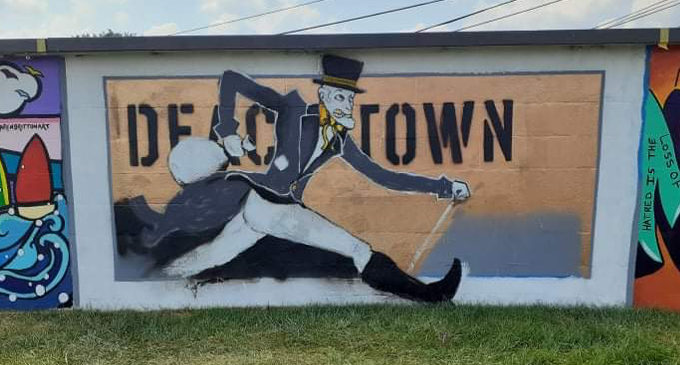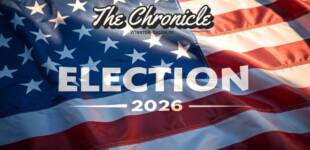Is removal of local artist’s mural art censorship?
The “Deactown” mural painted by Nick Schmidt was removed from the wall of Artivity on the Green park. Schmidt was a participant in Art for Art’s Sake's Mural Fest.

Depiction of university mascot sparking community conversations
Winston-Salem is known as the City of Arts and Innovations for its vibrant visual and performing arts communities. But what happens when art is censored by an entity established to further the creation and enjoyment of art?
Nick Schmidt found out first hand when he had his mural removed from a downtown park.
Here’s what we know: Schmidt was one of 10 local artists chosen to participate in Mural Fest, an annual event hosted by Art for Art’s Sake (AFAS), where local artists have the opportunity to paint murals on the walls of Artivity on the Green park, which is located next to AFAS’ headquarters on Liberty Street. Mural Fest has been held in downtown Winston-Salem since 2007, but this was Schmidt’s first time participating. He said he wanted to participate last year but the event was cancelled, so when he got the invite this year, he jumped at the opportunity to have his work displayed in one of the city’s most visual parks.
As the day for Mural Fest drew closer, Schmidt reached out to Kendall Doub, curator of Mural Fest, to get a better understanding of the rules. “I hadn’t heard any restrictions about content yet and I knew that my piece was going to be a little controversial because of Wake Forest’s downtown presence,” Schmidt said.
In response to his inquiry, Schmidt received a text from Doub where he was told, “No violence, no nudity, and no politics.” In a response text Schmidt wrote, “Lots of things can be political these days, can you be more specific?”
Schmidt then wrote a text describing his piece. “I sent a few paragraphs describing my piece, how it was going to portray the Deacon as a robber baron in front of the words “DEACTOWN,” stepping on little houses,” Schmidt continued. “I said it’s not personally attacking anyone but it is criticizing a big institution in our city, and I got approval.”
Schmidt began working on his portrayal of the Demon Deacon on Saturday, Sept. 11, and he added a few more details on Sunday. Two days later, Schmidt received a text message that said his mural had to be removed because it was receiving major pushback from sponsors and that same day the mural was removed. Schmidt noted that Doub did offer to give him another stipend to create a new mural.
“He tried to be extremely gracious. I like to say that because I really think Kendall was put in an impossible position,” Schmidt said. “I think big capitalist organizations like to do that to people, kinda force them into middle management roles to avoid accountability, and I think that’s what they did with Kendall. I think he is still very well intentioned and a very good artist to have in our community.”
Since they’ve covered his mural with grey paint, it’s created what is called a Streisand effect – a phenomenon that occurs when an attempt to hide or censor information actually increases awareness. In less than a week’s time, Schmidt has received invitations to paint the mural in other locations in the city and he’s been in contact with several media outlets.
“Because they tried to cover this up and get it painted over so quickly, I’ve received so much public support. I have received some criticism as well, but I’ve gotten a lot of support. Also it’s sparked this huge conversation about affordable housing, Wake Forest’s role in our city, about censorship and who controls what people can say in Winston-Salem,” Schmidt continued. “And as an artist, that’s the big payoff; seeing these conversations take place in my community is wonderful, that’s the goal.”










